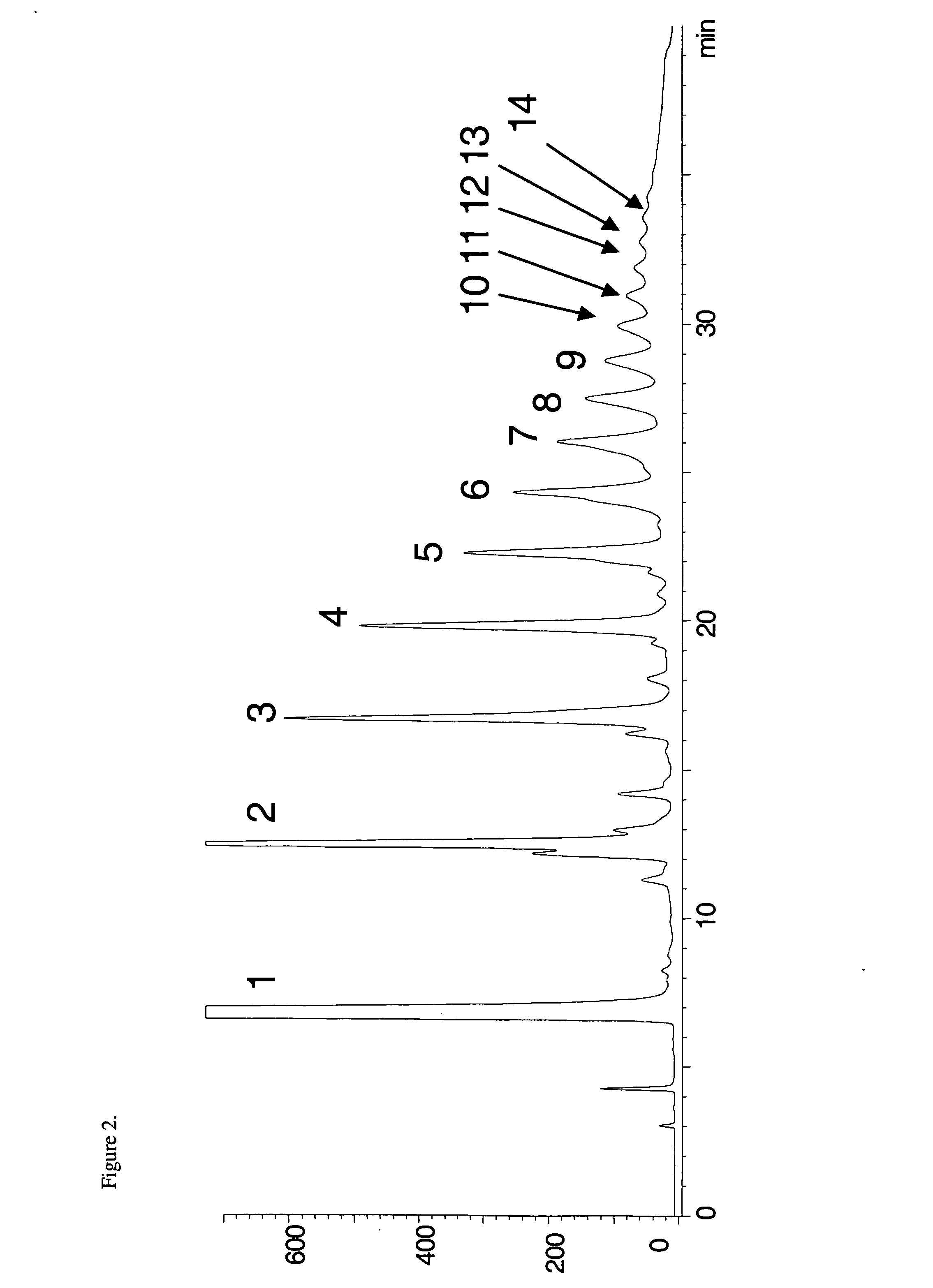Improved process for analyzing for separating, and for isolating polar protic monomers and/or oligomers
- Summary
- Abstract
- Description
- Claims
- Application Information
AI Technical Summary
Benefits of technology
Problems solved by technology
Method used
Image
Examples
Embodiment Construction
[0050] The present invention discloses an improved process for separating and isolating polar protic monomer(s) and / or oligomer(s) on the basis of degree of polymerization, using a diol-based LC system having a binary mobile phase to elute one or more individual fractions containing individual polar protic monomer(s) and / or oligomer(s), as well as a system for same.
[0051]FIG. 1 shows the structure of monomeric flavan-3-ols and procyanidin oligomers linked through C4→C8 and C4→C6 linkage.
[0052] The improved processes and system of the present invention, using a diol-based stationary phase LC column and binary mobile phase comprising an A phase of acetonitrile and acetic acid (CH3CN:HOAc) in a 98:2 (v / v) mix, and a B phase of methanol, water and acetic acid (CH3OH:H2O:HOAc) in a 95:3:2 (v / v / v) mix, overcome the problem of provide for better separation of individual oligomers, including especially higher order oligomers. FIG. 4, shows a comparison of chromatograms using diol (top) an...
PUM
| Property | Measurement | Unit |
|---|---|---|
| Fraction | aaaaa | aaaaa |
| Fraction | aaaaa | aaaaa |
| Fraction | aaaaa | aaaaa |
Abstract
Description
Claims
Application Information
 Login to View More
Login to View More - R&D
- Intellectual Property
- Life Sciences
- Materials
- Tech Scout
- Unparalleled Data Quality
- Higher Quality Content
- 60% Fewer Hallucinations
Browse by: Latest US Patents, China's latest patents, Technical Efficacy Thesaurus, Application Domain, Technology Topic, Popular Technical Reports.
© 2025 PatSnap. All rights reserved.Legal|Privacy policy|Modern Slavery Act Transparency Statement|Sitemap|About US| Contact US: help@patsnap.com



